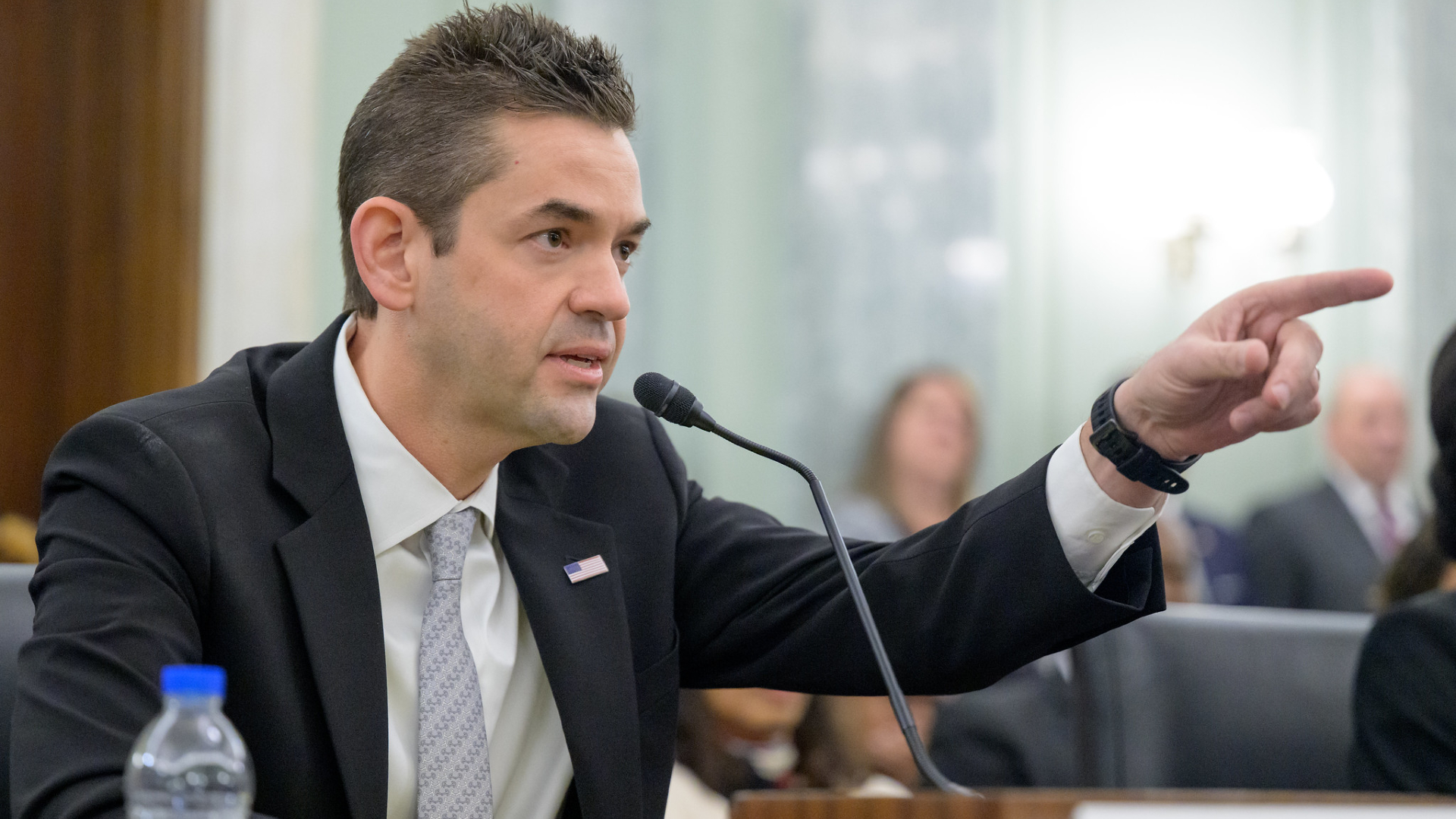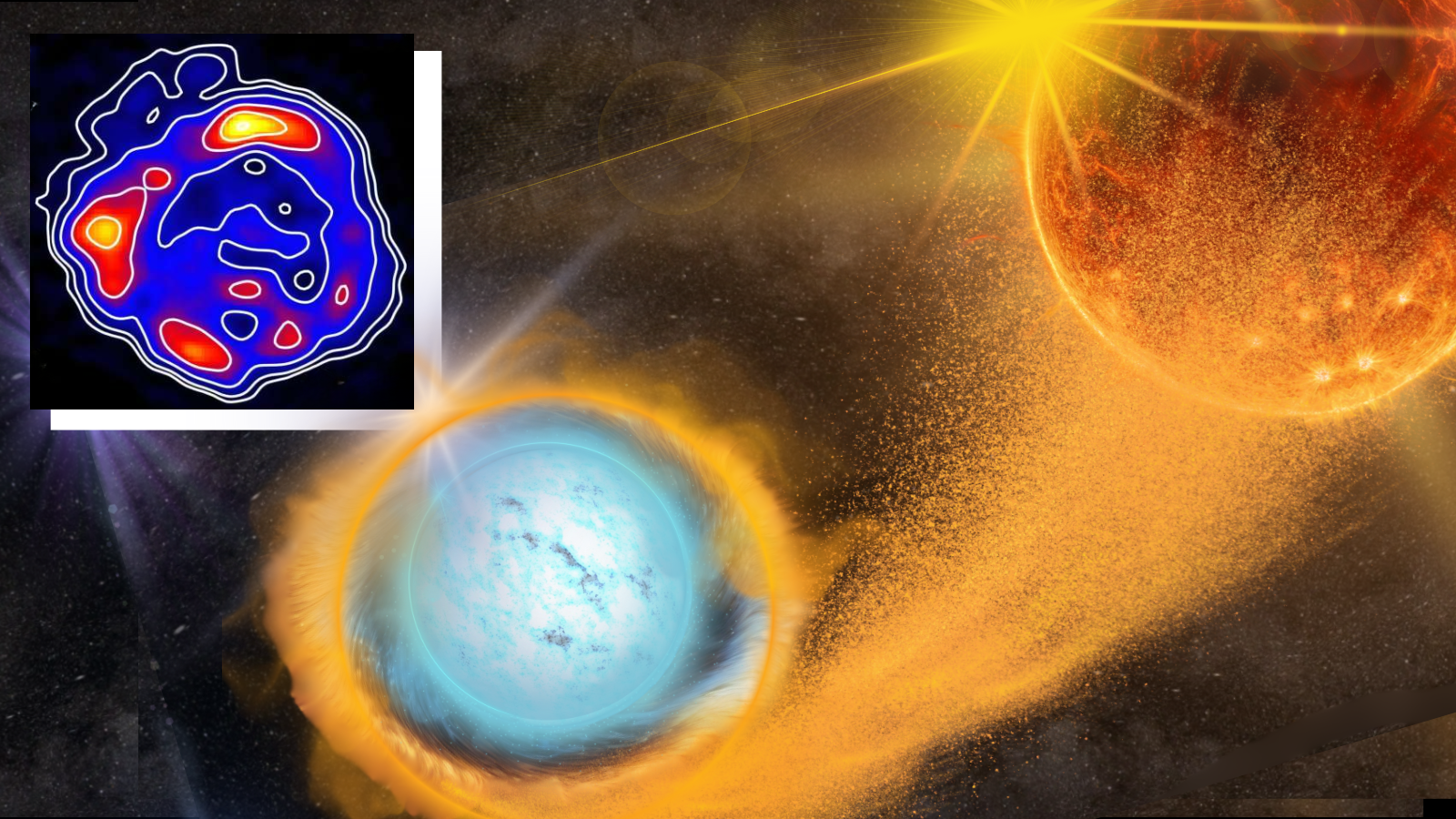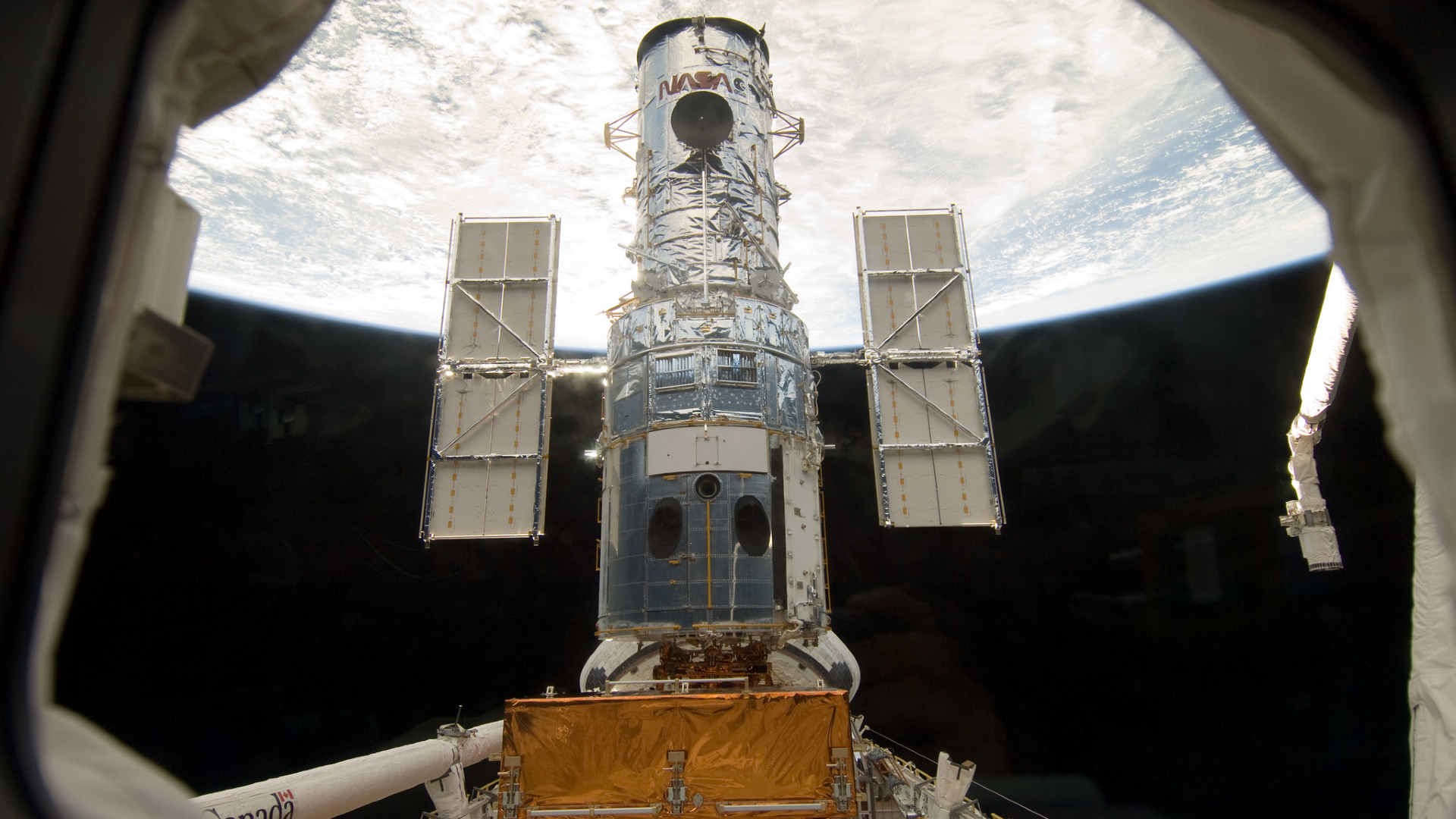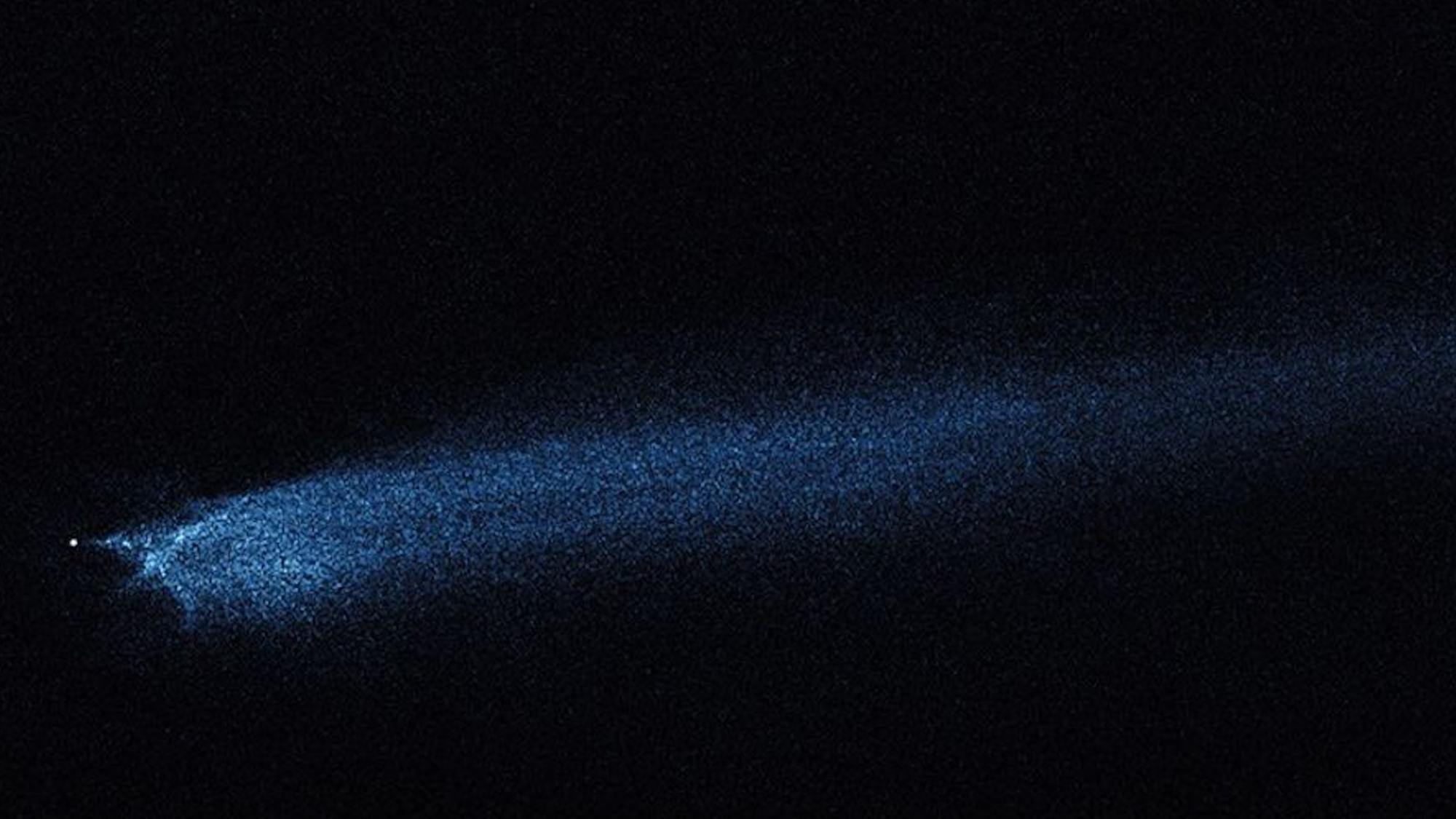Apollo Astronaut's Anniversary Patch Recalls 'Flight of the Phoenix'
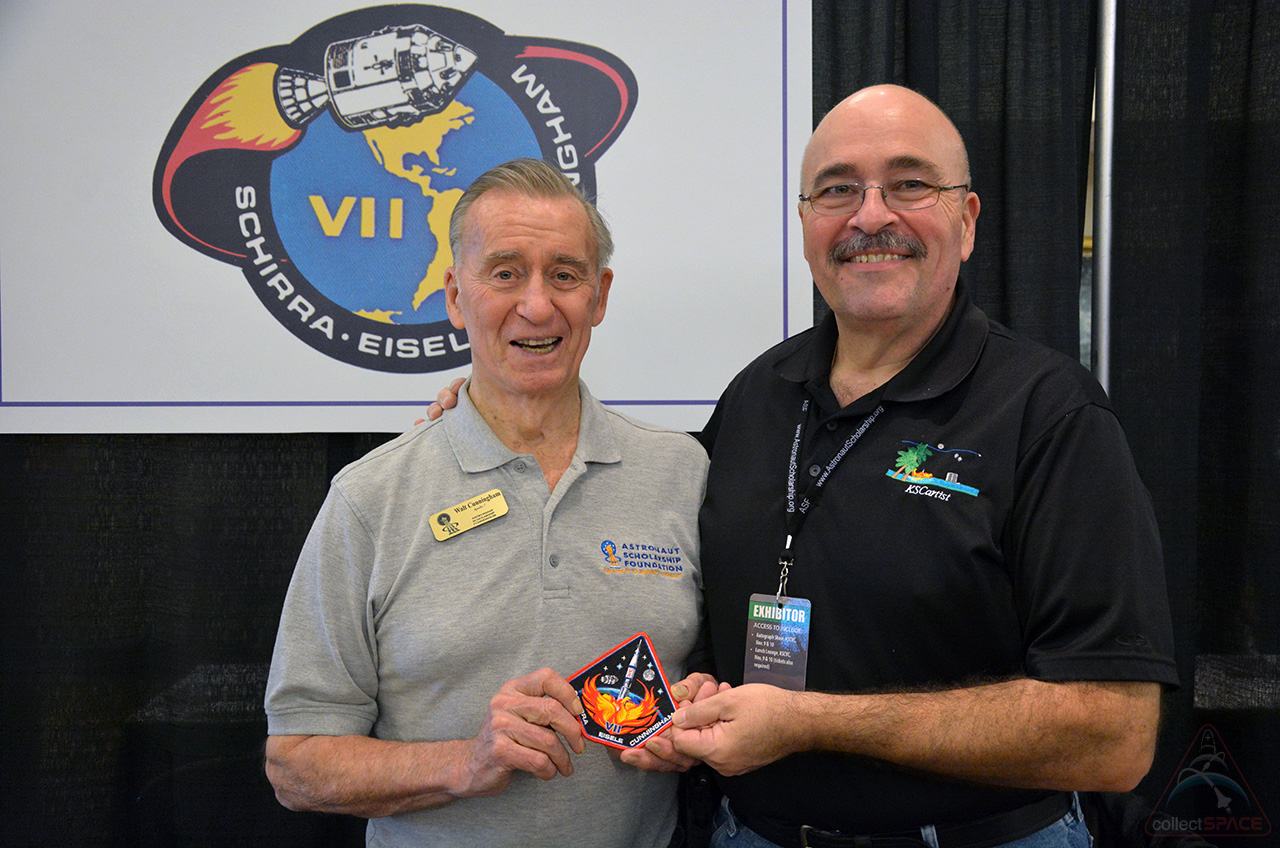
Forty-six years ago this week, NASA's first Apollo astronauts to launch into space were circling the Earth — just as their mission patch depicted.
The insignia showed the Apollo 7 spacecraft, including the command and service module, in an inclined elliptical orbit flying above the planet. The circular emblem captured the goal of the 11-day flight: To test the new spacecraft during a "shakedown cruise" to prove it was ready to fly crews to the moon.
As appropriate as the design may have been, it was not what the crew initially envisioned as representing all of the aspects of their mission.
"Our original patch concept was to depict a Saturn 1B [rocket] rising from the ashes of its predecessor, like the mythical bird, Phoenix," Apollo 7 astronaut Walt Cunningham wrote on his website.
Cunningham, and his crewmates Wally Schirra and Donn Eisele, wanted to pay tribute to the first Apollo crew, who died when a fire broke out inside their spacecraft during a Jan. 27, 1967 test on the launch pad. As their back-ups, Cunningham, Schirra, and Eisele had inherited the Apollo 1 crew's mission.
The fire, which was caused by a short circuit and inflamed by the capsule's pure oxygen atmosphere, resulted in the Apollo command module being redesigned. The safe flight of Cunningham and his crewmates was largely the result of the lessons learned from the loss of Virgil "Gus" Grissom, Ed White and Roger Chaffee.
As such, the Apollo 7 crew recruited Al Stevens, an artist for the aerospace contractor North American Rockwell, to come up with some Phoenix-centric patch designs.
Get the Space.com Newsletter
Breaking space news, the latest updates on rocket launches, skywatching events and more!
NASA however, had other plans.
"They did not want the public to be reminded of the fire as we were finally getting off the ground with Apollo," recalled Cunningham in an email to collectSPACE explaining why NASA disapproved of the Phoenix motif.
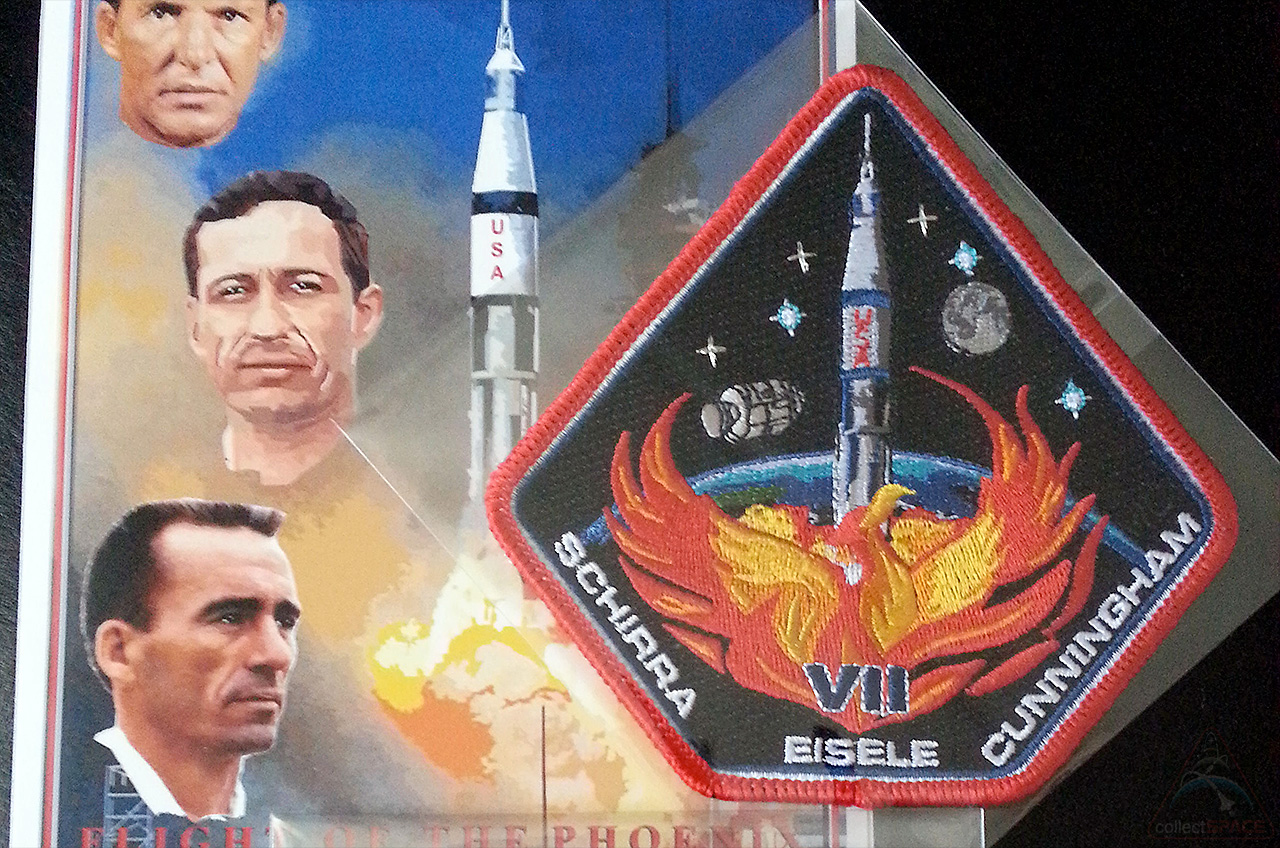
So the crew moved on to the Earth-orbit concept that became their official patch. Over the years, however, Cunningham wondered what it would have been like had they been able to use their original idea.
"Apollo 7, rising from the ashes of the Apollo 1 fire that claimed the lives of three friends, was NASA's first 'Return to Flight,'" Cunningham wrote on his website. "This 'Flight of the Phoenix' placed America firmly on the path to 'land a man on the Moon and return him safely to Earth in this decade.'"
For the 45th anniversary of the Apollo 7 mission in 2013, Cunningham decided to have the original insignia adapted for a commemorative emblem. Stevens died in 1994, so Cunningham turned to veteran patch artist Tim Gagnon for help.
"The 45th patch was based on the concept I tried to sell to NASA back in '68," Cunningham told collectSPACE.com. "Stevens did not get much time to work on it [back then]. I worked closely with Tim Gagnon to develop the patch."
The commemorative patch depicts the Apollo 7 spacecraft atop the Saturn 1B, rising from the fire on Launch Pad 34. The flames are represented by a Phoenix, spreading its wings to take flight.
In tribute to the Apollo 1 crew, Cunningham and Gagnon borrowed the illustration of the Apollo spacecraft from their mission patch, pointing toward the moon. Six stars on the emblem represent Grissom, White and Chaffee along with the Apollo 7 crewmembers.
"Trimmed in red, white, and blue, it [also] pays tribute to our country for daring to dream the impossible," Cunningham said.
Only 250 of the anniversary patches were produced last year, fewer than half of which have sold to date. Listed for sale on Cunningham's website, they retail for $40 each, or $115 if also signed by the Apollo 7 astronaut.
"Those who buy [them] seem to really like them," Cunningham said.
Seeing the four-decade-old idea come to fruition as a real emblem, he now feels the Phoenix may have been ahead of its time.
"I like the commemorative, but it would have been a bit too sophisticated back in the sixties," Cunningham said.
For more details or to order a commemorative patch, see: www.waltercunningham.com
Click through to collectSPACE to see artist Al Stevens’ 1968 ideas for a Phoenix-themed Apollo 7 mission patch.
Follow collectSPACE.com on Facebook and on Twitter at @collectSPACE. Copyright 2014 collectSPACE.com. All rights reserved.
Join our Space Forums to keep talking space on the latest missions, night sky and more! And if you have a news tip, correction or comment, let us know at: community@space.com.

Robert Pearlman is a space historian, journalist and the founder and editor of collectSPACE.com, a daily news publication and community devoted to space history with a particular focus on how and where space exploration intersects with pop culture. Pearlman is also a contributing writer for Space.com and co-author of "Space Stations: The Art, Science, and Reality of Working in Space” published by Smithsonian Books in 2018.In 2009, he was inducted into the U.S. Space Camp Hall of Fame in Huntsville, Alabama. In 2021, he was honored by the American Astronautical Society with the Ordway Award for Sustained Excellence in Spaceflight History. In 2023, the National Space Club Florida Committee recognized Pearlman with the Kolcum News and Communications Award for excellence in telling the space story along the Space Coast and throughout the world.


